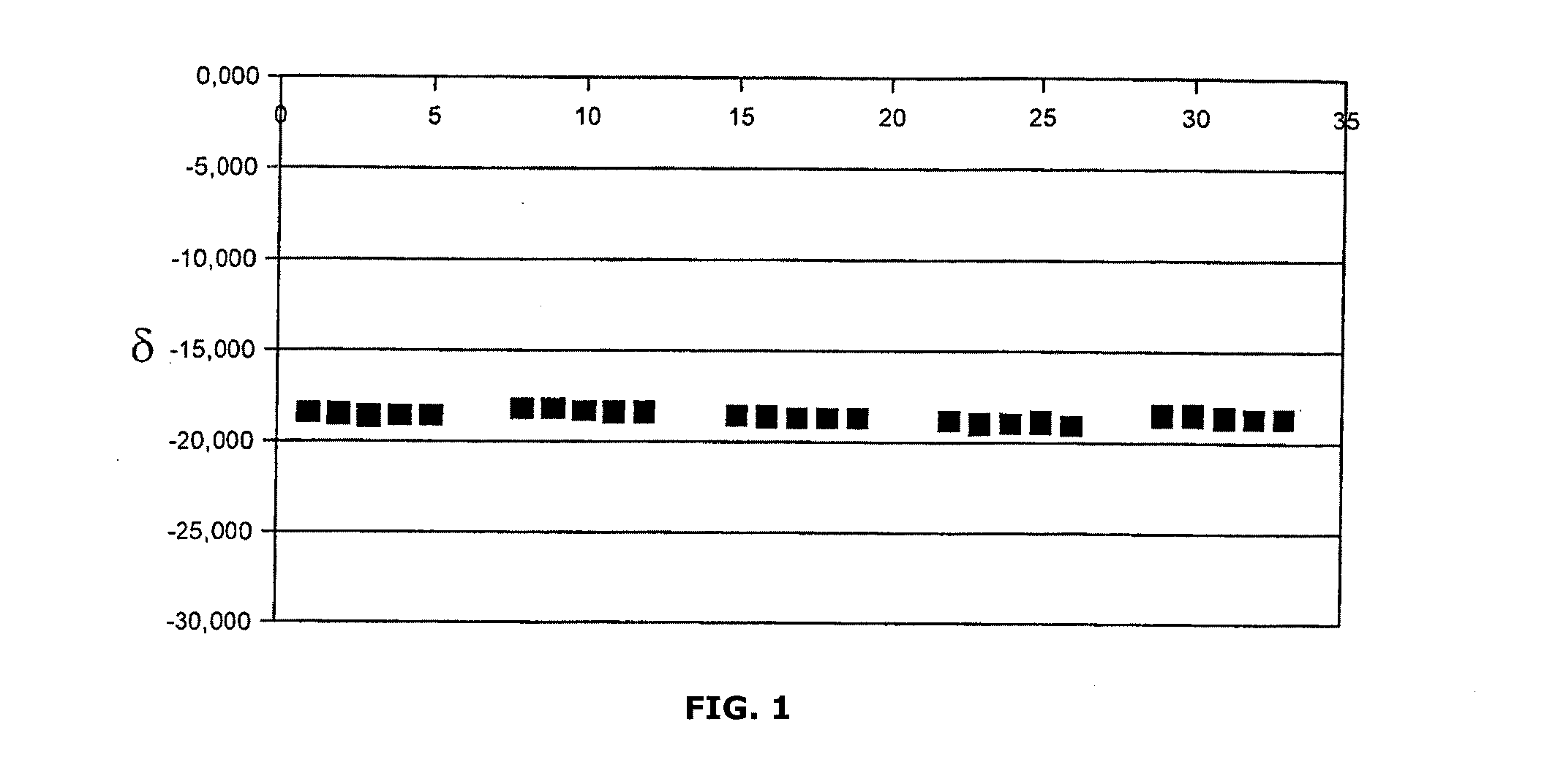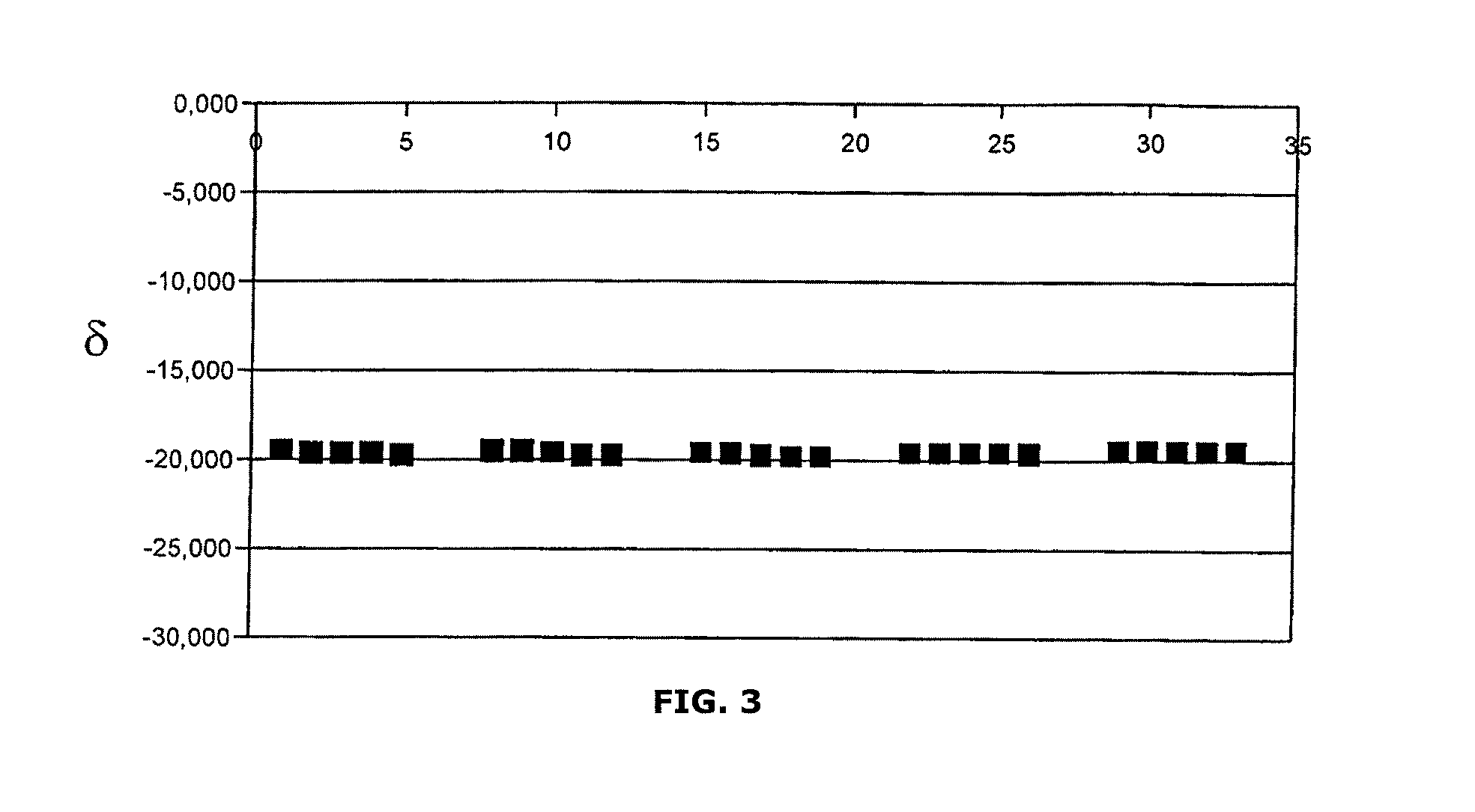Method for isolating urea while removing objectionable co2
- Summary
- Abstract
- Description
- Claims
- Application Information
AI Technical Summary
Benefits of technology
Problems solved by technology
Method used
Image
Examples
example 1
Urea Isolation Using Filtration
[0067]Plasma was obtained from a blood sample. 300 μl plasma was diluted with 200 μl deionized water. 100 μl acetonitrile containing 1% formic acid was added to the sample. A precipitation formed in the vessel. The samples were filtered using a HybridSPE column.
[0068]The filtrate was mixed with 50 μl M phosphoric acid, frozen and lyophilized. The sample was adjusted to a pH value of 5.5 using a degassed 0.5 M phosphate buffer solution, pH 9. The sample container (Vacutainer) was rinsed with helium gas. Thereafter, 70 μl of a solution containing 15 mg / ml Jack Bean Urease Type III from Sigma in phosphate buffer was added. The sample was incubated for one hour at 36° C. Thereafter, 60 μl 20% phosphoric acid was injected through the septum so as to stop the urease reaction and release CO2. The released CO2 was used to determine the isotope ratio by means of IRMS.
example 2
Urea Isolation Using No Filtration
[0069]The method as in Example 1 was carried out, however the addition of acetonitrile and formic acid, and the filtration step were dispensed with, which is to say the plasma sample was directly lyophilized after acid was added. The remainder of the method was carried out in identical fashion.
example 3
Reproducibility of the Method
[0070]A plasma sample was divided into five samples, which were each subjected separately from each other to the method according to Example 1. Each CO2 sample that was obtained was measured five times. The differences are minimal; refer to FIG. 1.
PUM
 Login to view more
Login to view more Abstract
Description
Claims
Application Information
 Login to view more
Login to view more - R&D Engineer
- R&D Manager
- IP Professional
- Industry Leading Data Capabilities
- Powerful AI technology
- Patent DNA Extraction
Browse by: Latest US Patents, China's latest patents, Technical Efficacy Thesaurus, Application Domain, Technology Topic.
© 2024 PatSnap. All rights reserved.Legal|Privacy policy|Modern Slavery Act Transparency Statement|Sitemap



